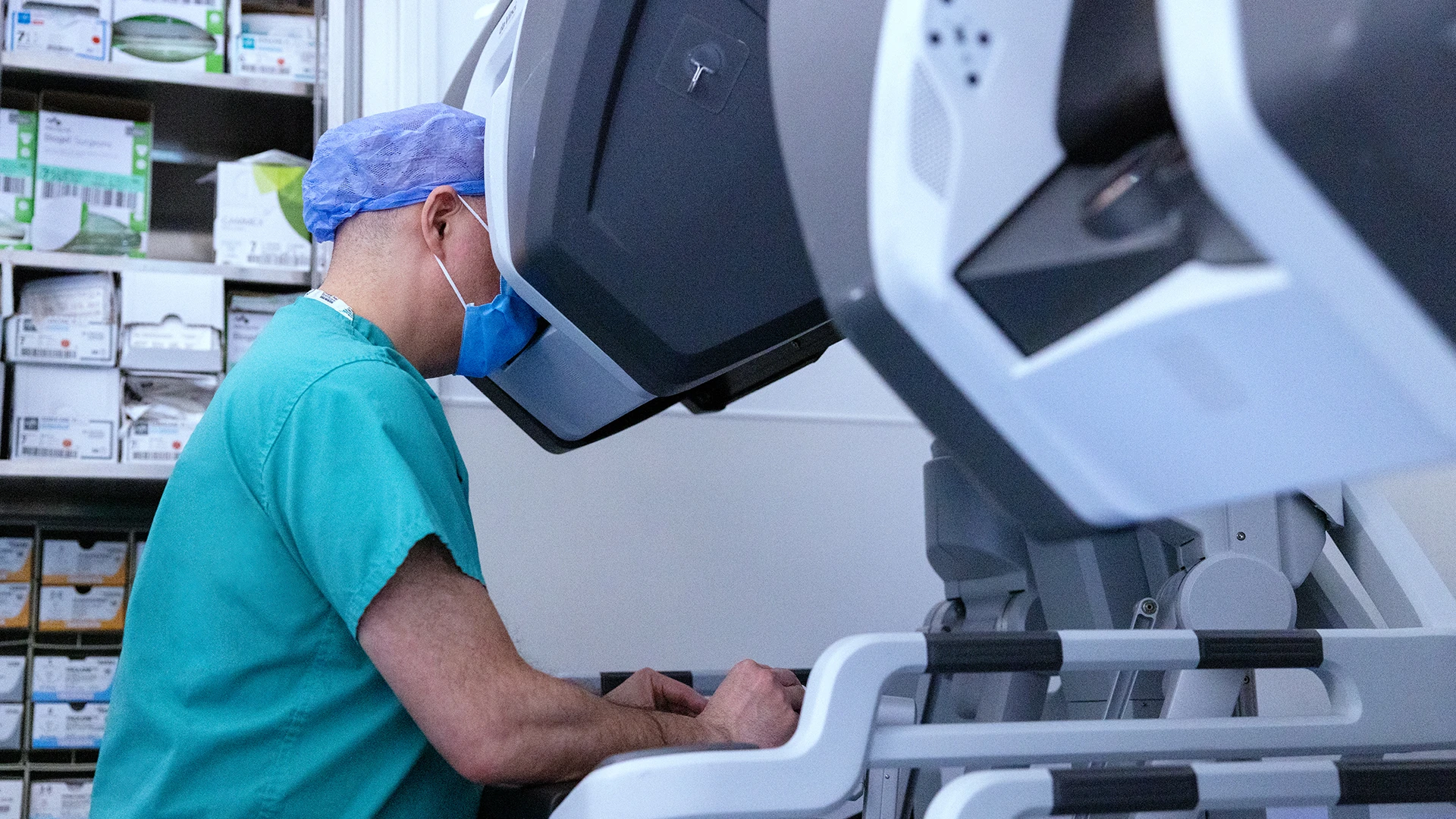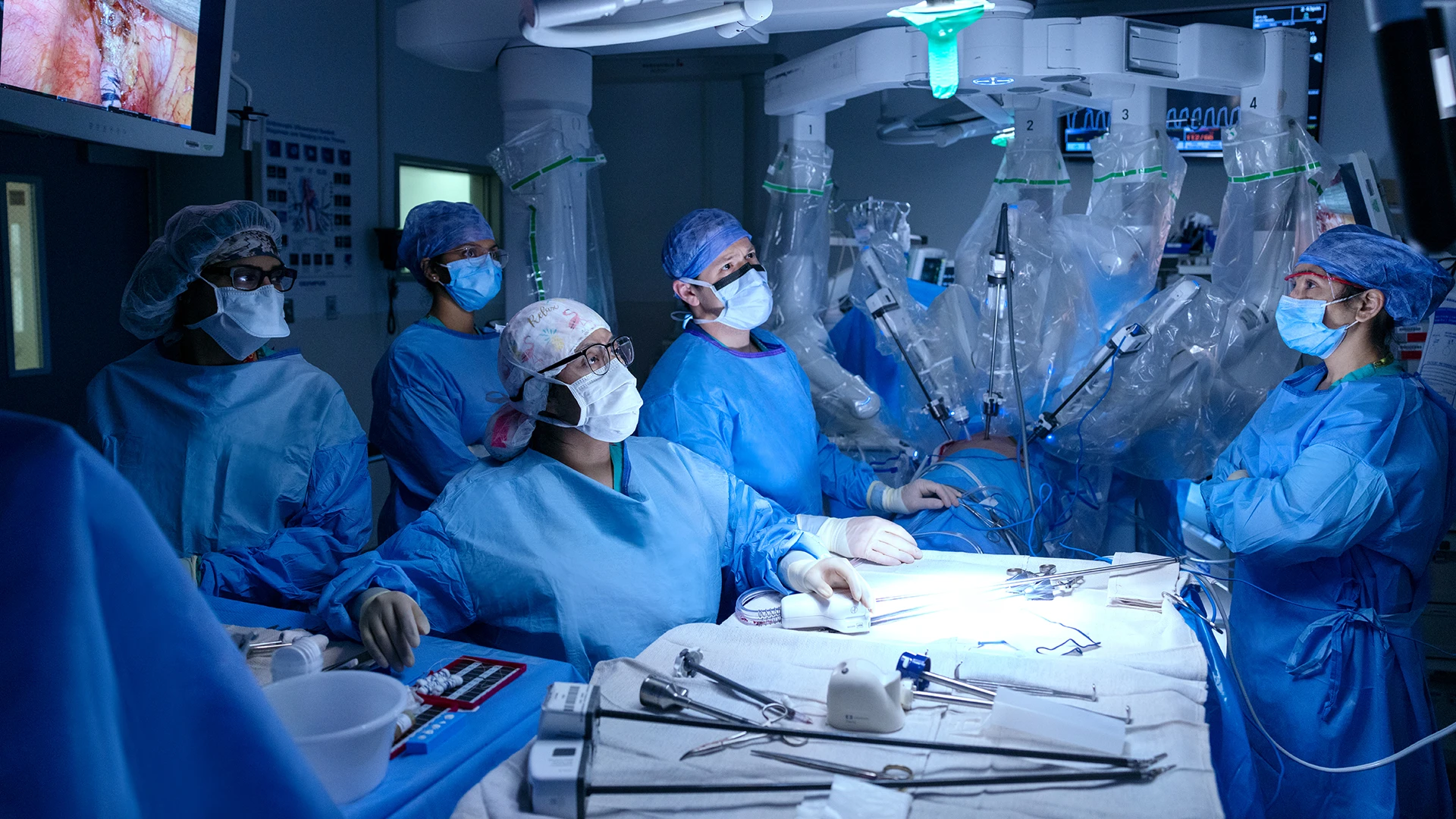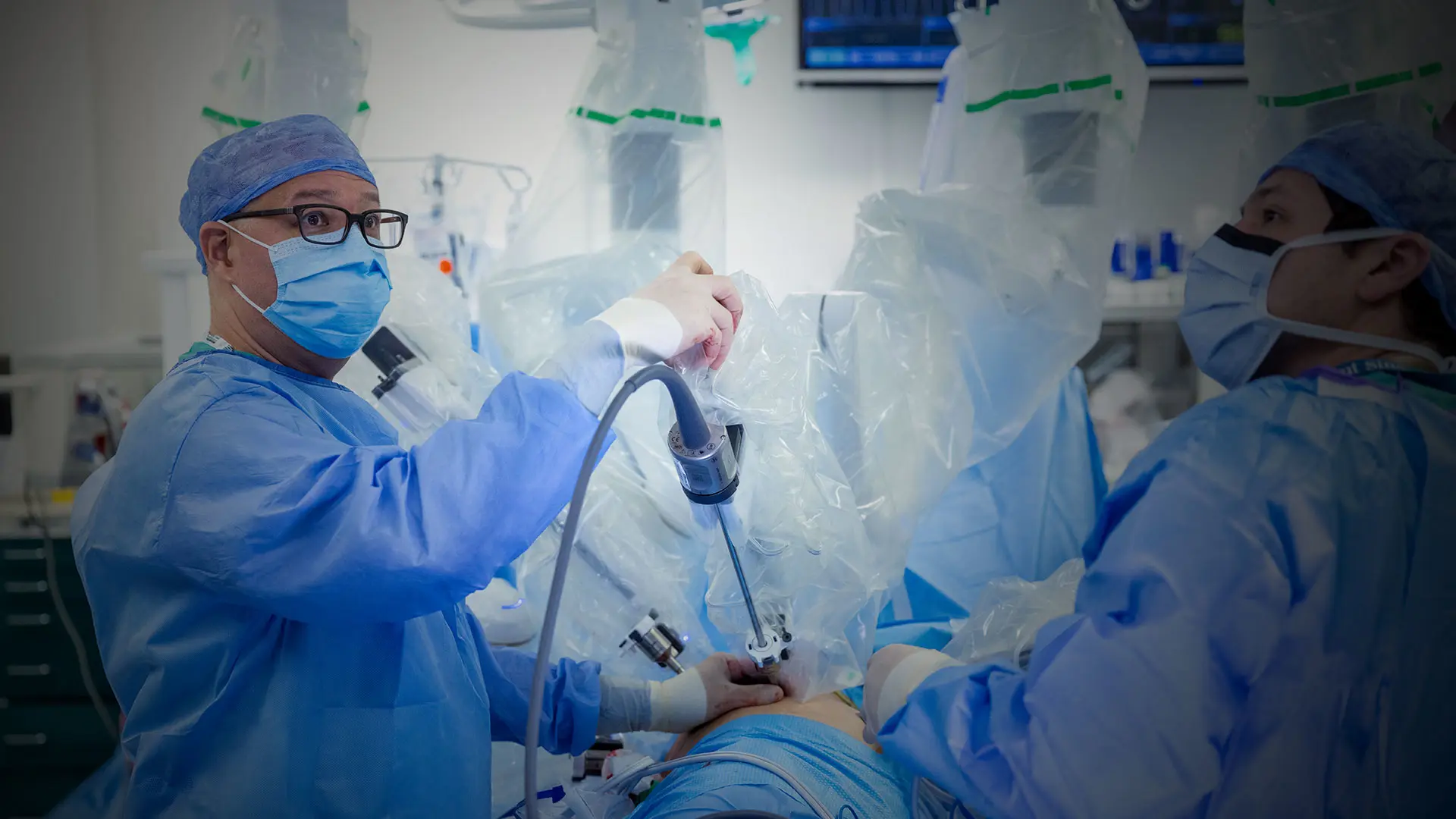For years, Andrew J. Kaufman, MD, successfully treated patients who presented with neurogenic, arterial, and venous thoracic outlet syndrome through an open-surgery approach to resection of the first rib. Even so, he had significant concerns about the risk of complications associated with the procedure.
“This is a very tight area that has several key structures such as the subclavian vein, the subclavian artery, and the brachial plexus,” says Dr. Kaufman, Director of the Thoracic Surgery Airway Program and the Asian Thoracic Surgery Program at the Mount Sinai Health System. “An injury to any one of these could be catastrophic for the patient. But there was also an associated risk for complications due to the lack of direct visualization and poor visualization of important structures that are encountered with open surgery.”
Inspired by these concerns, and taking advantage of advances in robotics with improved visualization and instrumentation, Dr. Kaufman led the development of a unique three-incision robotic surgical technique for conducting minimally invasive first-rib resections that he says is safer, more effective, and easily reproducible. He began using the new protocol in 2018.
"Because it is an internal approach that enables me to identify the correct anatomy, I can do the same operation every time regardless of the patient’s body habitus or the side of the body I am operating on,” says Dr. Kaufman, who is also Vice Chair and Associate Professor of Thoracic Surgery at the Icahn School of Medicine at Mount Sinai.
“Moreover, using our protocol, we have successfully performed about 50 resections without any instances of postoperative bleeding or complications and with better long-term results. That means we are able to discharge patients sooner and eliminate medications and procedures needed in the future, which is beneficial for them and for our health care system.”
Dr. Kaufman’s approach to robot-assisted thoracoscopic first-rib resection is unique in that he uses three eight-millimeter incisions to perform the procedure. He is aware of other surgeons who use an extra robotic arm or port, but he has found that his approach results in a quicker recovery for patients and significantly reduced postoperative pain.
“This is a very sensitive area and using only three small incisions is not merely preferable from a cosmetic standpoint but also a morbidity standpoint, particularly when compared to open surgery,” Dr. Kaufman says. “In our experience, patients who underwent open surgery reported significant discomfort postoperatively that we don't see with the robotic approach.”

Andrew J. Kaufman, MD, has developed a unique three-incision robotic surgical technique for minimally invasive first-rib resections.

Dr. Kaufman and his team have performed roughly 50 resections without any instances of postoperative bleeding or complications.
Once Dr. Kaufman has placed the instrumentation and conducted an examination of the patient’s anatomy, he proceeds to dissect the junction of the first rib with the sternum to open up the intercostal muscles and achieve pliability with the ribs. Using an angled scope for enhanced visualization, Dr. Kaufman begins the meticulous millimeter-by-millimeter dissection of the ligaments and muscular attachments, being careful to preserve the nearby neurovascular structures. After resecting a section of the first rib with a thoracoscopic rib cutter, Dr. Kaufman removes it through one of the port sites, files the remaining section to remove sharp edges, inserts a surgical drain, and closes the incision.
Typically, Dr. Kaufman is able to complete the procedure in an hour, and patients are discharged the next day. The fact that he has achieved this efficiency with virtually no blood loss and no complications is particularly notable given the significant scar tissue that must be removed among patients who present with a venous condition or the requirement for neurolysis among neurogenic patients.
The protocol he developed has drawn interest from other centers, in part based on its success, but also because Dr. Kaufman is one of only a few surgeons who are performing robotic rib resection. This, he adds, is likely due to an overall lack of expertise in thoracic outlet syndrome at most centers, the technical demands of the procedure, and the need to be highly proficient in robotic surgery to perform the operation. “Like most leading-edge procedures, there is no formal training in this technique,” Dr. Kaufman says. “It is developed by practitioners with advanced surgical abilities and the ability to devise novel surgical approaches due to their background, training, and clinical volume.”
With each successful procedure, Dr. Kaufman continues to refine his approach. He is also building a database that will enable him to conduct retrospective studies, such as comparing the protocol’s efficacy and safety against open surgery. The next frontier, he says, is to partner with the robot surgical system manufacturers to develop more specific musculoskeletal instrumentation that results in more precise surgery and even better outcomes.
“I believe it is possible to do even more precise surgical procedures and chest wall operations robotically, but that’s a long-term plan,” he says. “In the meantime, we will continue to advance the diagnosis and treatment of this condition any way we can.”
